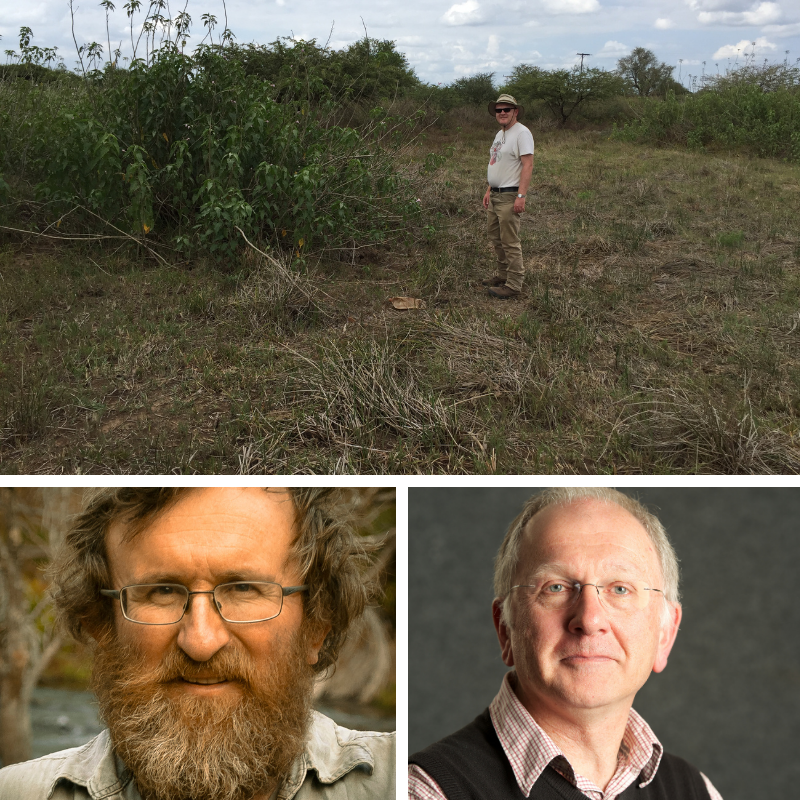A newly identified killifish species from the iconic Serengeti National Park in Tanzania, has been named for Sir David Attenborough in recognition of his dedicated efforts to promote biophilia – an awareness of the wonders and beauty of nature.
In contrast to the charismatic wildebeest and their spectacular annual migration, the brightly coloured Nothobranchius attenboroughi is barely five centimetres long and known to live fast and die young. The species is endemic to northern Tanzania and integral to the Serengeti-Mara ecosystem.
That is why five scientists and fish enthusiasts from Canada, France and South Africa decided to name this highly vulnerable species after the doyen of biodiversity conservation.
“We wanted to honour Sir Attenborough for raising awareness of the wonders and beauty of nature to so many people worldwide, promoting the importance of biodiversity conservation, and above all, inspiring so many young persons and researchers in the field of natural history, including ourselves," explains the authors: Prof Dirk Bellstedt and Dr Fenton (Woody) Cotterill, a biochemist and geologist respectively and their student, De Wet van der Merwe, from Stellenbosch University, South Africa, together with Béla Nagy, from France, and Prof Brian Watters, from Canada.
 Together this eclectic group of scientists have been working on fish species endemic to East Africa since the 1990s. Between the five of them they have covered thousands of kilometres from as far north as Chad and Sudan through eastern central Africa to the Caprivi Region of Namibia and northern KwaZulu-Natal province in South Africa, in an effort to collect, study and describe Nothobranchius species and to collect tissues for laboratory work. Key to their studies has been the DNA sequencing and molecular systematic work started by Dr Cotterill in 2007 in Prof Bellstedt's laboratory and subsequently greatly expanded by De Wet van der Merwe in his PhD studies since 2015.
Together this eclectic group of scientists have been working on fish species endemic to East Africa since the 1990s. Between the five of them they have covered thousands of kilometres from as far north as Chad and Sudan through eastern central Africa to the Caprivi Region of Namibia and northern KwaZulu-Natal province in South Africa, in an effort to collect, study and describe Nothobranchius species and to collect tissues for laboratory work. Key to their studies has been the DNA sequencing and molecular systematic work started by Dr Cotterill in 2007 in Prof Bellstedt's laboratory and subsequently greatly expanded by De Wet van der Merwe in his PhD studies since 2015.
They want to make use of this opportunity to raise awareness about the precarious conservation status of Nothobranchius fishes in general: “The biodiversity of East Africa is deservedly renowned for the diversity of its spectacular large mammals, but the freshwater fish fauna is no less significant. The conservation status of Nothobranchius attenboroughi depends on the integrity of the Serengeti-Mara ecosystem and the area surrounding Lake Victoria," explains Prof Bellstedt.
This is because these fish literally only live long enough during the wet season to reach maturity and then die after they've laid their eggs in the habitat substrate mud and the seasonal pools dry out. As the mud dries, cracks allow oxygen to penetrate and the embryos to develop. When the rainy season arrives and the pools fill again, the eggs hatch, the fry grow rapidly and the cycle repeats itself.
With climate change and human settlement in the regions surrounding Lake Victoria, the conservation of the Serengeti-Mara ecosystem is not only important for the conservation of the large mammals such as wildebeest and their migration, but also for these wonderfully adapted, brightly coloured little fish and their precarious life cycle. Sir David Attenborough has always emphasized that an ecosystem consists of many species including even the smallest and this is also one of the reasons the authors have named the species in his honour.
More about Nothobranchius attenboroughi
Nothobranchius attenboroughi is endemic to northern Tanzania and found in ephemeral pools and marshes associated with the Grumeti River system and other small systems draining into Lake Victoria at the east side of the lake. The ecological integrity of this river is maintained by the congruence of its catchments largely within the Serengeti-Mara ecosystem. It is one of six new species described in an article entitled “Review of the Nothobranchius ugandensis species group from the inland plateau of eastern Africa with descriptions of six new species (Teleostei: Nothobranchiidae)", published in the journal Ichthyological Exploration of Freshwaters in April this year. The article is available online at https://pfeil-verlag.de/publikationen/review-of-the-nothobranchius-ugandensis-species-group-from-the-inland-plateau-of-eastern-africa-with-descriptions-of-six-new-species/
The work was largely privately funded by the authors, but since 2015, it has been funded under the umbrella of the “Off the Beaten Track" initiative of the Volkswagen Foundation in Germany and Stellenbosch University in South Africa. The aim of the project, entitled “Exploring the Genomic Record of Living Biota to Reconstruct the Landscape Evolution of South Central Africa", is to develop a novel approach to reconstruct the landscape evolution of central Africa over the past 20 million years. This is being done by combining Sanger and next-generation sequencing of the DNA of fish groups, such as the killifish and cichlid fishes, with high precision rock dating of key landforms.
On the photo above: The brightly coloured killifish species, Nothobranchius attenboroughi, is only five centimetres long. It is found in ephemeral pools and marshes at the east side of Lake Victoria, where its survival depends on the annual rain season when the dry riverbeds of the Serengeti-Mara ecosystem start flowing again. Photo: Brian Watters
Media interviews
Prof Dirk U. Bellstedt,
Stellenbosch University
E-mail: dub@sun.ac.za
Mobile:+27-73-1661380
Dr Fenton Cotterill
Department of Earth Sciences, Stellenbosch University
E-mail: fcotterill@gmail.com

